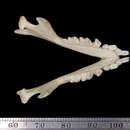Biology
provided by Arkive
Hedgehogs are nocturnal animals, and can travel up to 1-2 km per night whilst foraging for food. They have a broad diet, including worms, slugs, caterpillars and many other invertebrates (2), as well as frogs, berries (6) and the eggs and chicks of ground-nesting birds (2). Due to a variable resistance to adder venom, hedgehogs can even attack and eat adders (7).
Hedgehogs are good swimmers, can run fairly quickly, and are well known for their habit of rolling into a tight ball when threatened (8). They hibernate in winter in a nest made of leaves, typically under sheds or log piles. They emerge from hibernation around Easter time, and breeding occurs between April and September. Females give birth to 4-5 young per litter, and are left to raise the young alone (2).
Like other hedgehogs, this species has the peculiar habit of 'self-anointing', in which the hedgehog produces a large amount of foamy saliva and licks the saliva over its spines. The purpose of this behaviour is a mystery (9), but it can be triggered by strong smells, new foods, and the presence of other hedgehogs (7).
Conservation
provided by Arkive
The conservation status of this species in the UK is unclear. It is thought, however, that hedgehogs are common on a national basis, although they may be in decline on a regional level, and may even be vulnerable in some areas (9). For ways to make your garden more hedgehog friendly, see the Mammal Society fact sheet (link below).
Description
provided by Arkive
The hedgehog is one of our most instantly recognisable native mammals, as it is the only British mammal to have spines (2). They are also characterised by their fairly short tails, long legs and small ears (6). Young hedgehogs are born with a coat of soft, white spines, which are underneath the skin to protect the mother during birth, but emerge after a few hours (7). A second coat of dark spines emerges after about 36 hours, and later on a third set develops. By 11 days of age the young hedgehogs can curl into a ball, and after 14 days the eyes open (8).
Habitat
provided by Arkive
The hedgehog occupies a range of lowland habitats with enough cover to allow nesting (9). It is common in parks, farmland and gardens (2).
Range
provided by Arkive
This species is found in western Europe (9). In Britain it is widely distributed, and has been introduced to several islands (5).
Status
provided by Arkive
Classified as Least Concern (LC) on the IUCN Red List (1), listed under Appendix III of the Bern Convention (3), and listed as a Priority Species under the UK Biodiversity Action Plan (4). Partially protected in the UK under Schedule 6 of the Wildlife and Countryside Act (5).
Threats
provided by Arkive
Historically, hedgehogs have been persecuted as vermin; between 1566 and 1863, churchwardens made payments for hedgehogs killed in their parish (5). Today, a number of factors are thought to pose threats to hedgehogs, including agricultural changes such as pesticide use and the loss of hedgerows and grasslands, drowning in garden ponds, falling into cattle grids (9), road deaths, poisoning by garden chemicals, and deaths caused by mowing machines (5).

